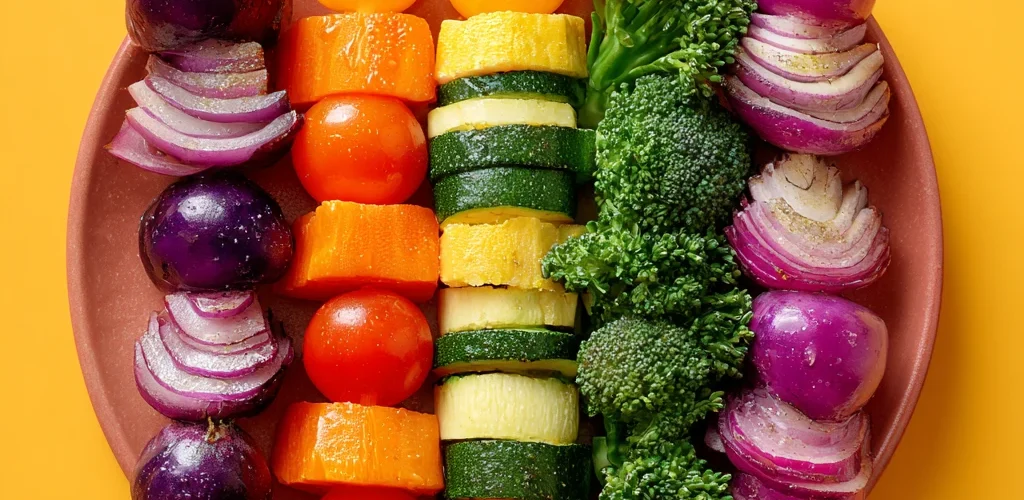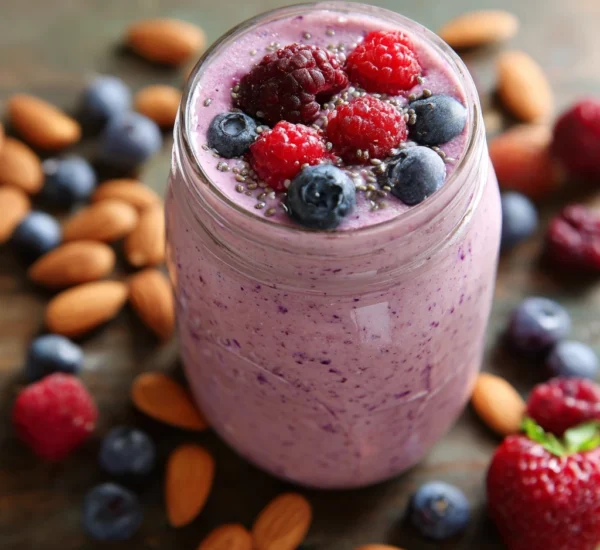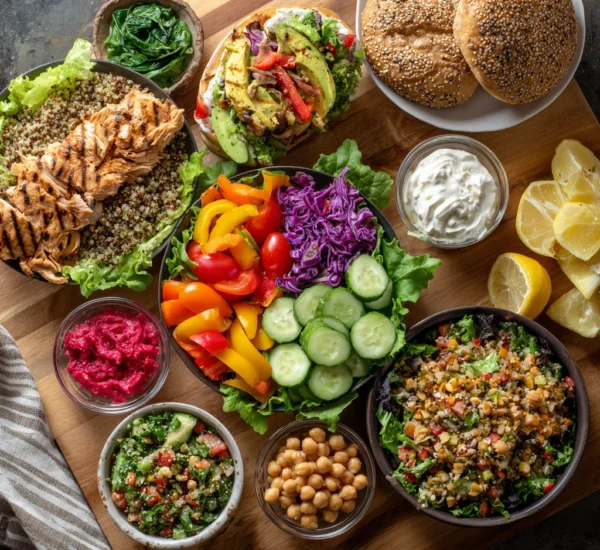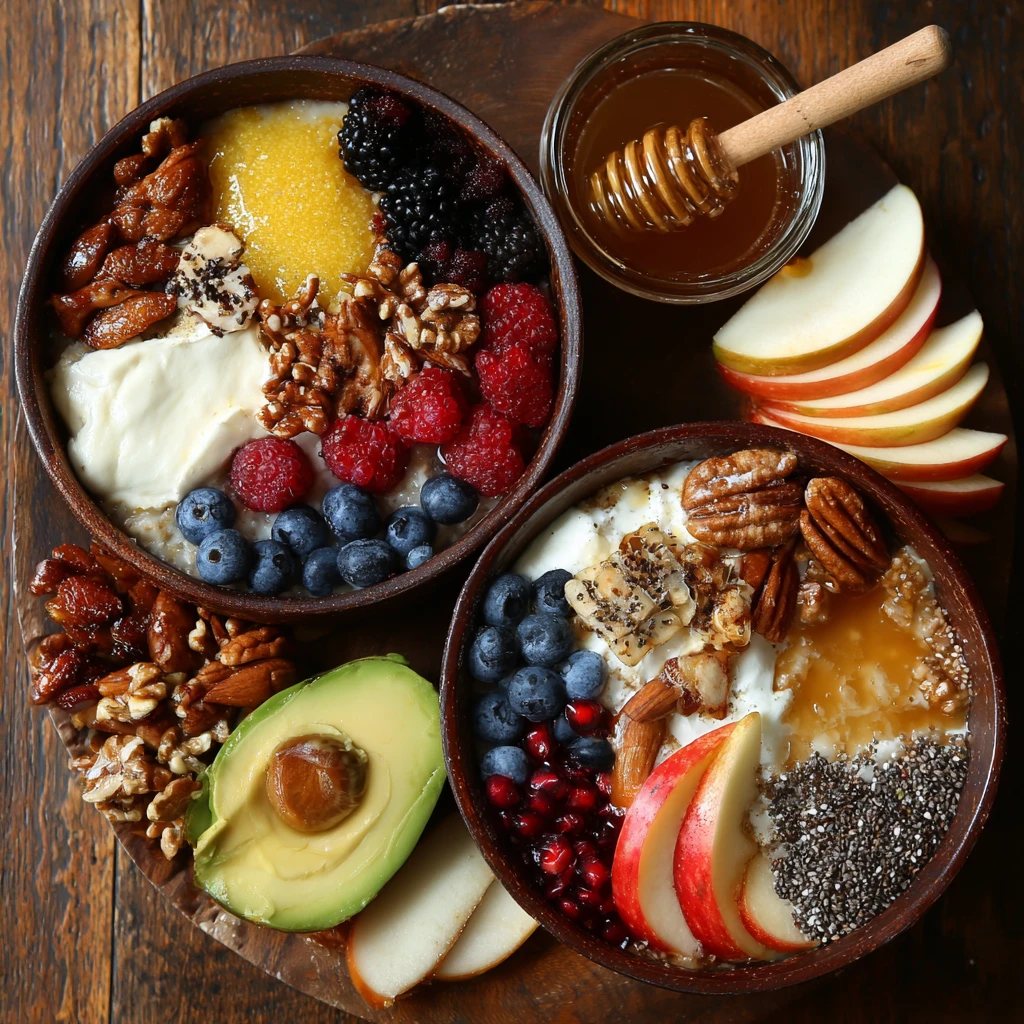Easy Ways to Brighten Your Plate with Color: A Guide to Delicious and Nutritious Meals
Adding color to your plate isn’t just about aesthetics; it’s a powerful way to boost your nutrient intake and make mealtimes more enjoyable. A vibrant plate is often a sign of diverse vitamins, minerals, and antioxidants. This guide will walk you through easy and delicious ways to brighten your plate with color, transforming your meals into visual and nutritional masterpieces.
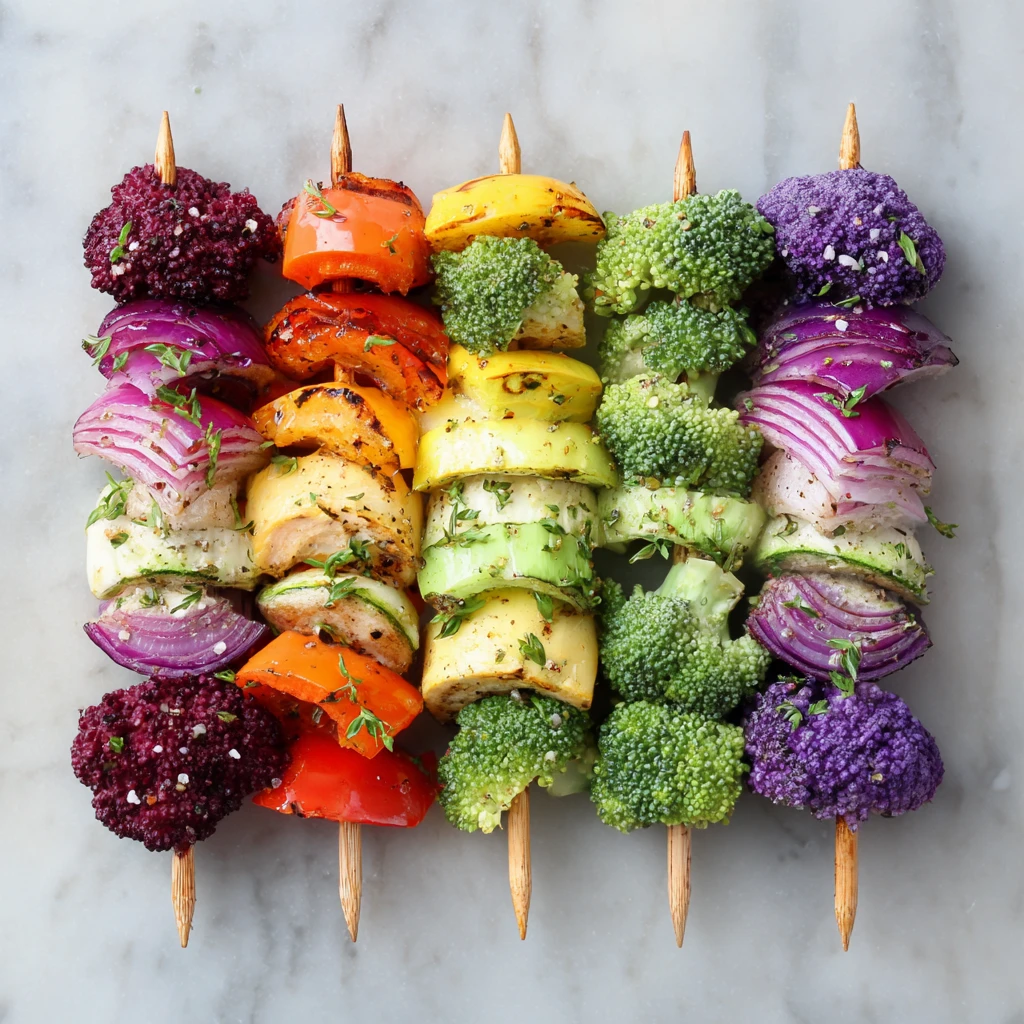
Why Color Matters: The Nutritional Powerhouse on Your Plate
The colors of fruits and vegetables are determined by specific phytonutrients, which are compounds that offer various health benefits. Each color group provides unique advantages, making it crucial to include a rainbow of hues in your daily diet.
- Red: Red fruits and vegetables, like tomatoes, strawberries, and red peppers, are rich in lycopene and anthocyanins. Lycopene is linked to a reduced risk of certain cancers, while anthocyanins offer antioxidant and anti-inflammatory properties.
- Orange and Yellow: Carrots, sweet potatoes, pumpkins, and oranges are packed with carotenoids, including beta-carotene, which the body converts into Vitamin A. These nutrients are essential for vision, immune function, and cell growth.
- Green: Leafy greens, broccoli, and green beans are excellent sources of chlorophyll, vitamins K, C, and folate. These nutrients contribute to bone health, immune function, and cell division.
- Blue and Purple: Blueberries, eggplant, and purple cabbage contain anthocyanins, which have been associated with improved brain function and reduced risk of heart disease.
- White and Brown: While often overlooked, foods like cauliflower, mushrooms, and onions offer unique benefits. Cauliflower contains sulforaphane, a compound with potential anti-cancer properties, while mushrooms are a good source of B vitamins and selenium.
By incorporating a variety of colors, you ensure you’re getting a broad spectrum of essential nutrients that support overall health and well-being.
Simple Strategies to Add More Color to Your Meals
Brightening your plate doesn’t require complicated recipes or drastic changes. Here are some simple, practical strategies you can easily incorporate into your daily routine:
1. Start with a Colorful Base
Begin by choosing a colorful base for your meals, such as a bed of mixed greens for salads, a vibrant quinoa salad, or a colorful stir-fry with various vegetables. This sets the stage for adding more layers of color and flavor.
Example: Instead of plain white rice, try using brown rice or quinoa as a base and mixing in chopped bell peppers, carrots, and edamame.
2. Embrace Seasonal Produce
Take advantage of seasonal fruits and vegetables, which are often at their peak flavor and nutritional value. Visit your local farmers’ market or grocery store to discover what’s in season and experiment with new recipes.
Example: In the summer, enjoy fresh berries, tomatoes, and zucchini. In the fall, incorporate pumpkins, apples, and sweet potatoes into your meals.
3. Incorporate Colorful Toppings
Add colorful toppings to your dishes to boost both flavor and visual appeal. Consider using fresh herbs, chopped nuts, seeds, dried fruits, or a sprinkle of colorful spices.
Example: Top your morning oatmeal with berries, nuts, and a drizzle of honey. Garnish your soups with fresh herbs like parsley, cilantro, or chives.
4. Blend Colorful Smoothies
Smoothies are a quick and easy way to pack a variety of fruits and vegetables into your diet. Experiment with different combinations to create colorful and nutritious blends.
Example: Blend spinach, blueberries, banana, and almond milk for a vibrant green and purple smoothie. Add a scoop of protein powder for an extra boost.
5. Get Creative with Salads
Salads don’t have to be boring. Create visually appealing and nutritious salads by incorporating a variety of colorful vegetables, fruits, and protein sources.
Example: Combine mixed greens, cherry tomatoes, cucumbers, bell peppers, carrots, avocado, and grilled chicken or chickpeas for a filling and colorful salad.
6. Add Colorful Sides
Instead of relying on the same old side dishes, explore colorful alternatives that complement your main course.
Example: Serve roasted asparagus with lemon, steamed green beans with toasted almonds, or a colorful slaw made with shredded cabbage, carrots, and red onion.
7. Use Colorful Garnishes
Even a simple garnish can make a big difference in the overall appearance of your plate. Use fresh herbs, edible flowers, or a sprinkle of paprika to add a pop of color.
Example: Garnish your soups with a swirl of cream and a sprinkle of paprika. Add edible flowers to your salads or desserts.
8. Make Colorful Snacks
Don’t forget about snacks! Choose colorful snacks that are both healthy and satisfying.
Example: Enjoy a handful of mixed berries, sliced bell peppers with hummus, or a colorful fruit salad.
Delicious Recipes to Brighten Your Plate
Here are a few recipes to inspire you to create colorful and delicious meals:
Rainbow Veggie Skewers with Lemon-Herb Marinade
These skewers are perfect for grilling or baking and are a great way to showcase a variety of colorful vegetables.
Ingredients:
- 1 red bell pepper, cut into chunks
- 1 yellow bell pepper, cut into chunks
- 1 green bell pepper, cut into chunks
- 1 red onion, cut into chunks
- 1 zucchini, cut into slices
- 1 yellow squash, cut into slices
- Cherry tomatoes
- 1/4 cup olive oil
- 2 tablespoons lemon juice
- 1 tablespoon chopped fresh herbs (such as rosemary, thyme, and oregano)
- Salt and pepper to taste
Instructions:
1. In a bowl, whisk together olive oil, lemon juice, herbs, salt, and pepper.
2. Thread the vegetables onto skewers, alternating colors and textures.
3. Brush the skewers with the lemon-herb marinade.
4. Grill or bake at 400°F (200°C) for 15-20 minutes, or until the vegetables are tender.
Colorful Quinoa Salad with Black Beans and Corn
This salad is packed with protein, fiber, and a variety of colorful vegetables, making it a healthy and satisfying meal.
Ingredients:
- 1 cup cooked quinoa
- 1 can (15 ounces) black beans, rinsed and drained
- 1 cup corn kernels
- 1 red bell pepper, diced
- 1/2 red onion, diced
- 1 avocado, diced
- 1/4 cup chopped cilantro
- 2 tablespoons lime juice
- 1 tablespoon olive oil
- Salt and pepper to taste
Instructions:
1. In a large bowl, combine quinoa, black beans, corn, bell pepper, red onion, avocado, and cilantro.
2. In a small bowl, whisk together lime juice, olive oil, salt, and pepper.
3. Pour the dressing over the salad and toss to combine.
4. Serve chilled or at room temperature.
Berry Parfait with Greek Yogurt and Granola
This parfait is a simple and delicious way to start your day with a burst of color and flavor.
Ingredients:
- 1 cup Greek yogurt
- 1/2 cup mixed berries (such as blueberries, raspberries, and strawberries)
- 1/4 cup granola
- 1 tablespoon honey (optional)
Instructions:
1. In a glass or bowl, layer Greek yogurt, berries, and granola.
2. Repeat the layers until the glass is full.
3. Drizzle with honey, if desired.
4. Serve immediately.
Vibrant Beet and Orange Salad with Pistachios
This salad combines the earthy sweetness of beets with the tangy brightness of oranges, creating a unique and flavorful dish.
Ingredients:
- 2 medium beets, cooked and sliced
- 2 oranges, peeled and segmented
- 1/4 cup crumbled goat cheese (optional)
- 1/4 cup pistachios, chopped
- 2 tablespoons olive oil
- 1 tablespoon balsamic vinegar
- Salt and pepper to taste
Instructions:
1. Arrange the beet slices and orange segments on a plate.
2. Sprinkle with goat cheese (if using) and pistachios.
3. In a small bowl, whisk together olive oil, balsamic vinegar, salt, and pepper.
4. Drizzle the dressing over the salad and serve.
Tips for Maintaining a Colorful Diet
Consistency is key when it comes to reaping the benefits of a colorful diet. Here are some tips to help you maintain a vibrant and nutritious eating pattern over the long term:
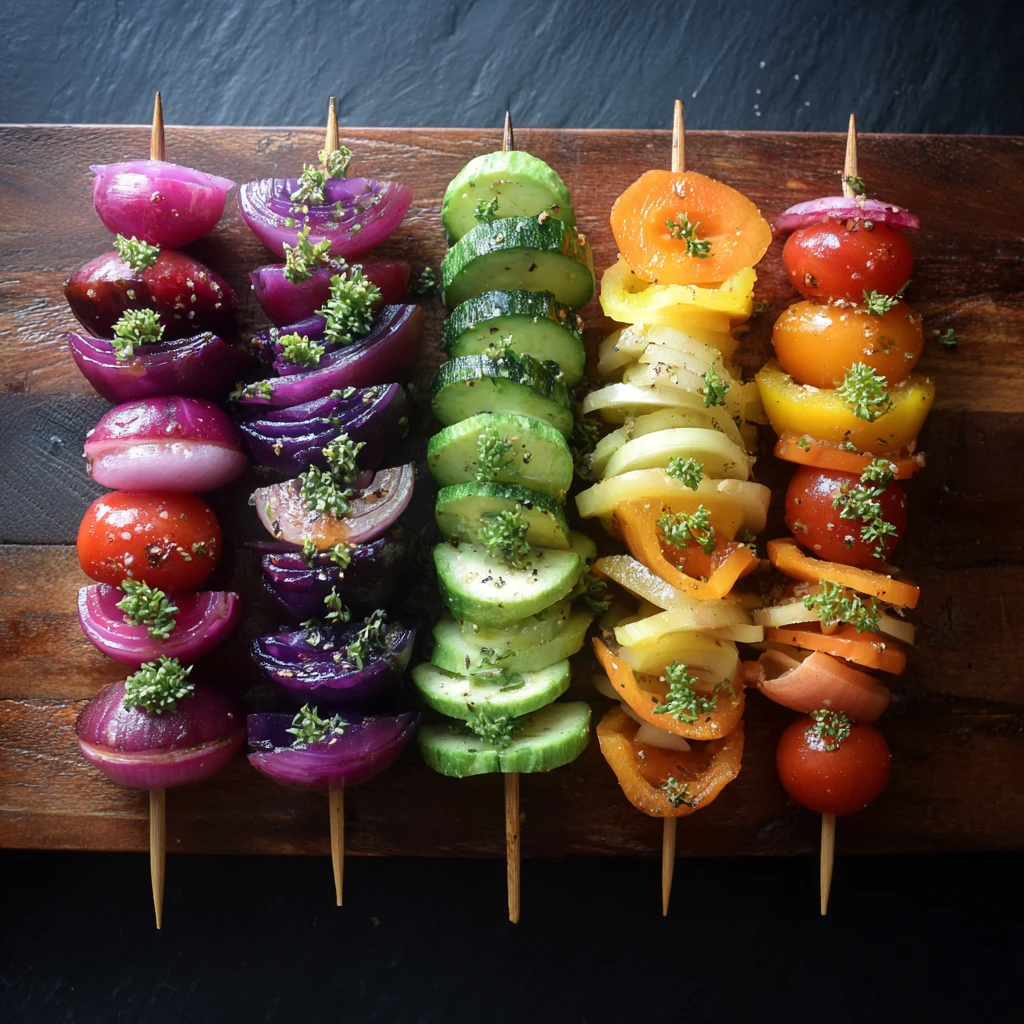
- Plan Your Meals: Take some time each week to plan your meals and snacks, focusing on incorporating a variety of colorful fruits and vegetables.
- Keep Colorful Foods Visible: Store colorful fruits and vegetables in a prominent place in your refrigerator or on your kitchen counter to remind you to eat them.
- Make it a Habit: Gradually incorporate more colorful foods into your diet over time. Start with one or two new fruits or vegetables each week and experiment with different recipes and preparation methods.
- Grow Your Own: Consider growing your own fruits, vegetables, or herbs. This is a great way to ensure you always have fresh, colorful produce on hand.
- Involve Others: Get your family and friends involved in your quest to eat more colorfully. Share recipes, visit farmers' markets together, and make mealtimes a fun and colorful experience.
- Don't Be Afraid to Experiment: Try new fruits and vegetables, explore different cuisines, and don't be afraid to experiment with flavors and textures. The more you enjoy your food, the more likely you are to stick with a healthy eating pattern.
Frequently Asked Questions (FAQs)
Q: Why is it important to eat a colorful diet?
A: Eating a colorful diet ensures you’re getting a wide variety of vitamins, minerals, and antioxidants, each color group offering unique health benefits.
Q: What are the benefits of eating red fruits and vegetables?
A: Red fruits and vegetables are rich in lycopene and anthocyanins, which are linked to a reduced risk of certain cancers and offer antioxidant and anti-inflammatory properties.
Q: How can I add more color to my plate?
A: Start with a colorful base, embrace seasonal produce, incorporate colorful toppings, blend colorful smoothies, get creative with salads, add colorful sides, use colorful garnishes, and make colorful snacks.
Q: What are some examples of colorful snacks?
A: Examples of colorful snacks include a handful of mixed berries, sliced bell peppers with hummus, or a colorful fruit salad.
Q: What are some tips for maintaining a colorful diet?
A: Plan your meals, keep colorful foods visible, make it a habit, grow your own, involve others, and don’t be afraid to experiment.
Q: Is it possible to eat too many fruits and vegetables?
A: While it’s rare, eating excessively large amounts of certain fruits and vegetables could lead to digestive discomfort. Focus on variety and moderation.
Q: Can I get enough protein from a colorful, plant-based diet?
A: Yes, you can get enough protein from a colorful, plant-based diet by including sources like legumes, nuts, seeds, quinoa, and tofu.
Q: Are frozen fruits and vegetables as nutritious as fresh ones?
A: Frozen fruits and vegetables are often just as nutritious as fresh ones, as they are typically frozen shortly after harvesting, preserving their nutrients.
Q: How can I make vegetables more appealing to children?
A: Cut vegetables into fun shapes, serve them with dips, involve children in meal preparation, and offer them a variety of colorful options.
Q: What is the best way to cook vegetables to preserve their nutrients?
A: Steaming, roasting, and stir-frying are good methods for preserving nutrients in vegetables. Avoid overcooking, which can destroy some vitamins.
